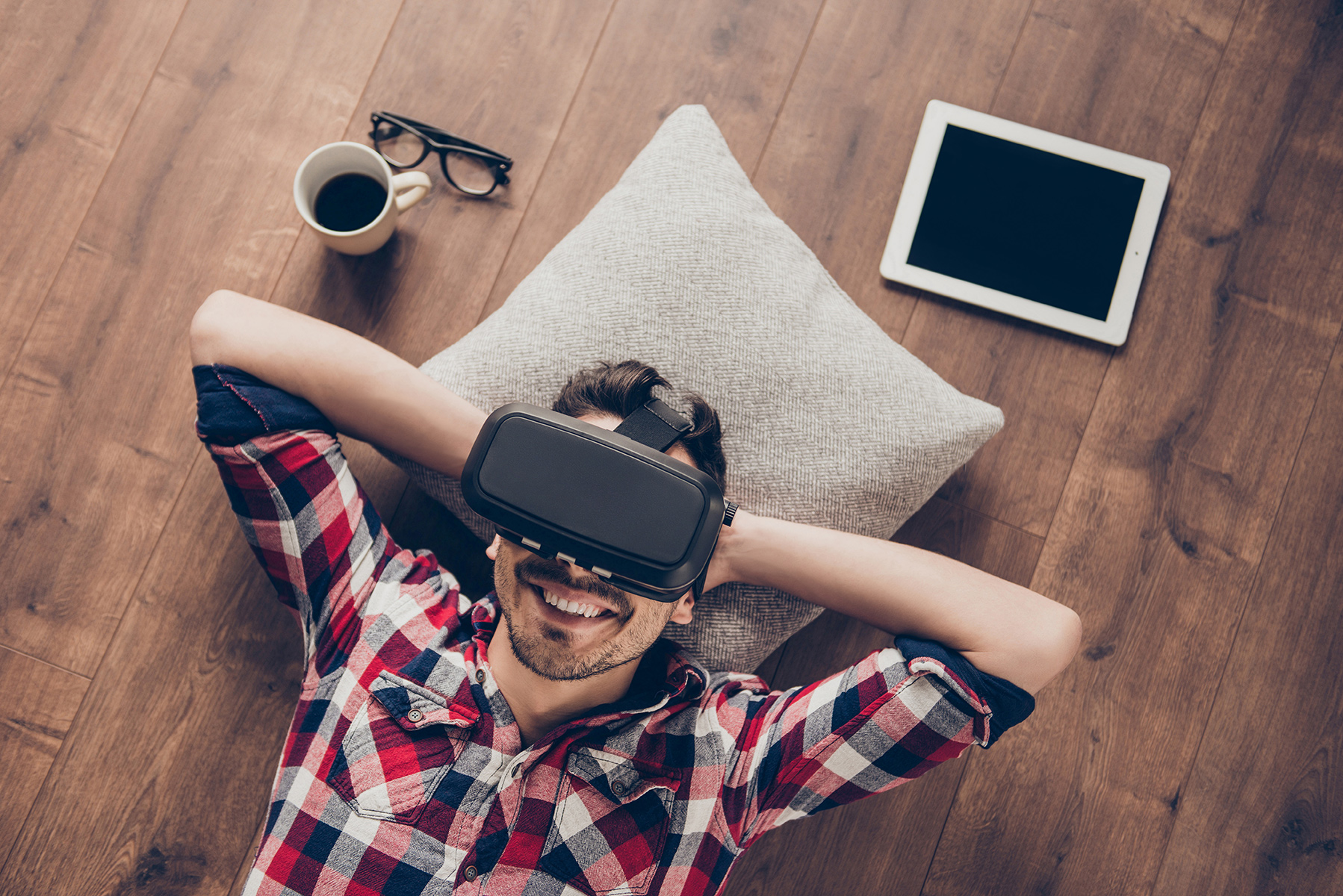When The Jetsons aired on TV in the early 1960s, Americans got an early glimpse of color television technology and a vision of what the future would hold. While we’re unfortunately not using flying cars, some of the fantasies of the show were prescient. George Jetson’s video chats with his boss resembled today’s Facetime and Skype calls. The family’s “televiewer” for news looked a lot like computer screens people use to get information today. And that robot vacuum cleaner? Those are whirling around many people’s living rooms now.
For the past 50 years, just as technology has changed Long & Foster’s real estate business, it has changed the way we live in our homes.
1960s – A Decade of Inventions
While color TV technology was invented in the 1950s, TV networks were still adapting and converting shows into color in the 1960s. When the decade started, most homes that had a television owned a black-and-white model, but as prices dropped and more shows were available in color, purchases of color TVs skyrocketed.
Americans listened to music on the radio and on stereo “HiFi” turntables. At the same time, inventors were working on the first microwave ovens for homes, along with cordless tools and smoke detectors—items that would be increasingly adopted by homeowners as they became less expensive.
The first self-cleaning oven was designed in the 1960s, although these ovens were prohibitively expensive for most people for several decades.
1970s – The Advent of Home Automation Technology
Smart home tech, while ubiquitous today, has a 40-year history. In the mid-1970s, X10 home control technology was introduced, allowing homeowners to control their light switches and main outlets by remote control or an individual switch.
The first personal computer, cell phone and VCR were all invented in the 1970s, and they would change the way people interact with each other in future decades. For better or worse, the first home video game consoles were introduced in the 1970s by Atari and Magnavox.
1980s – The Era of the Sony Walkman
Listening to music with friends and family gathered around a radio or stereo became less common in the 1980s, when the Sony Walkman introduced the ability to listen to music alone, anyplace and anytime.
Home entertainment evolved with the widespread adoption of VCRs, which allowed families to watch movies at home at their convenience rather than being tied to a movie theater or TV schedule. Recording programs to watch later offered a sneak preview of the future ability to stream shows at will.
In 1984, the National Association of Home Builders coined the term “smart home,” but the cost and complexity of connecting your household meant that smart homes were mostly showcase properties for wealthier homeowners.
While microwaves were invented in the 1960s, only 25 percent of households had one in the mid-1980s. By the end of the 1990s, 97 percent of households owned a microwave, according to IEEE.
1990s – The Decade of Personal Computers
While just 8 percent of households had a personal computer by the mid-1980s, during the 1990s a growing number of families purchased them. Internet access via dial-up modems slowly gained traction during the 1990s. By 2000, 50 percent of households had dial-up access and the No. 1 website was AOL.
Entertainment options shifted in the 1990s, too, with DVDs replacing video and CD players replacing tapes. By 1993, 50 percent of Americans listened to music on CD players.
Smart home networking systems became increasingly common in the 1990s, particularly for lighting systems and temperature controls in high-end homes.
2000s – Digital Everything
Since the early 2000s, the use of technology has exploded. In the realm of entertainment, 80 percent of households now own a high-definition TV, where they’re likely to be streaming movies and TV shows, as well as playing video games. MP3 players, which were the height of technology earlier in the 21st century, have given way to smart phones and high-tech speakers with better sound quality and digital streaming.
Smart phones, laptops, tablets and e-readers allow people to work, read and communicate from any room in their house. About 90 percent of households have Internet access.
High efficiency appliances with smart features can be controlled remotely and can tell us when we need more milk or shut-off automatically when we’re done cooking. Roomba and other robotic vacuum cleaners help keep our homes clean.
Today’s smart homes are as likely to be controlled by voice-activated systems as by an app on a smart phone. Among the most common smart home features embraced by homeowners include those that enhance security, such as video doorbells that can be controlled remotely, and those that reduce energy use, such as temperature controls and automated lights.
Now, if we could only get The Jetson’s flying cars to take us from home to work to school.
